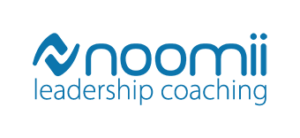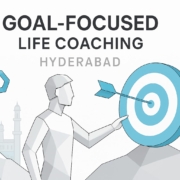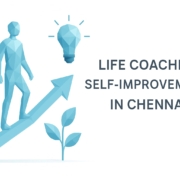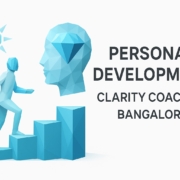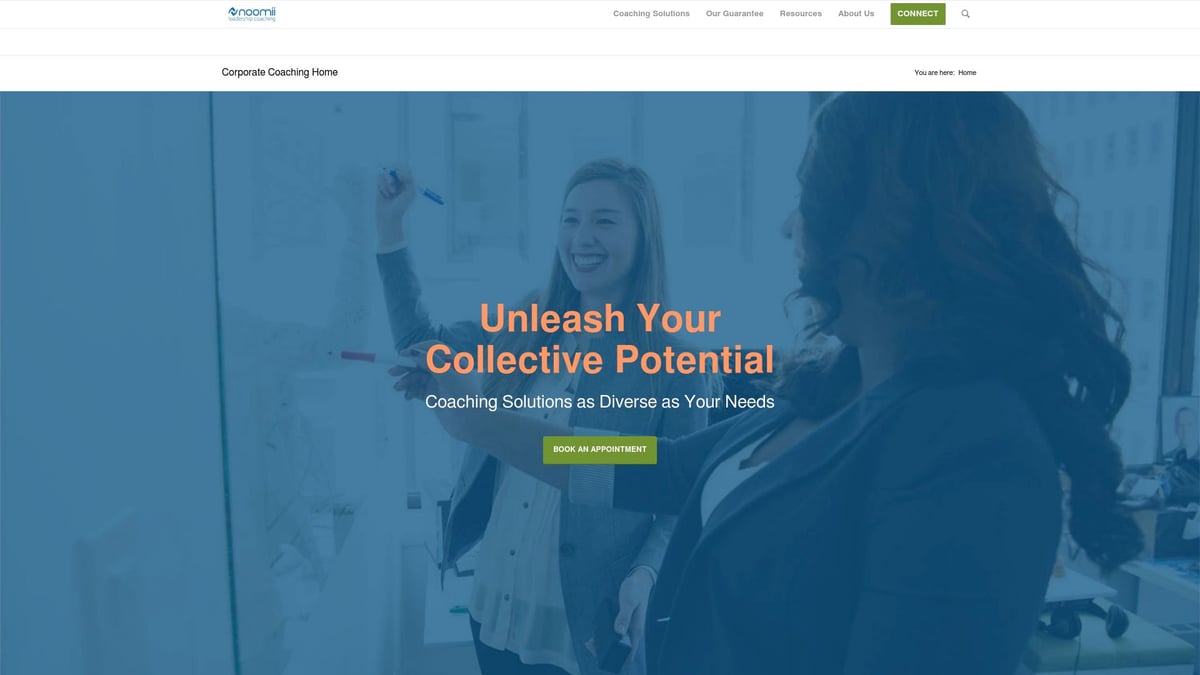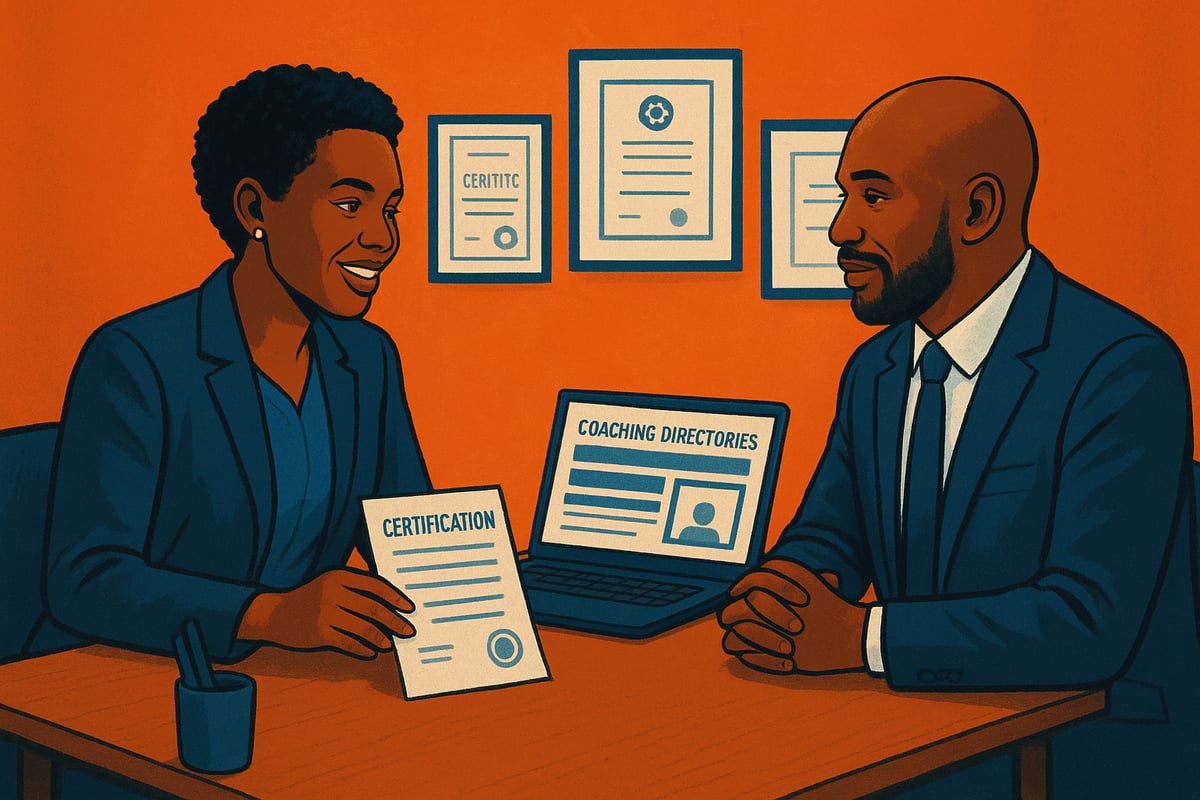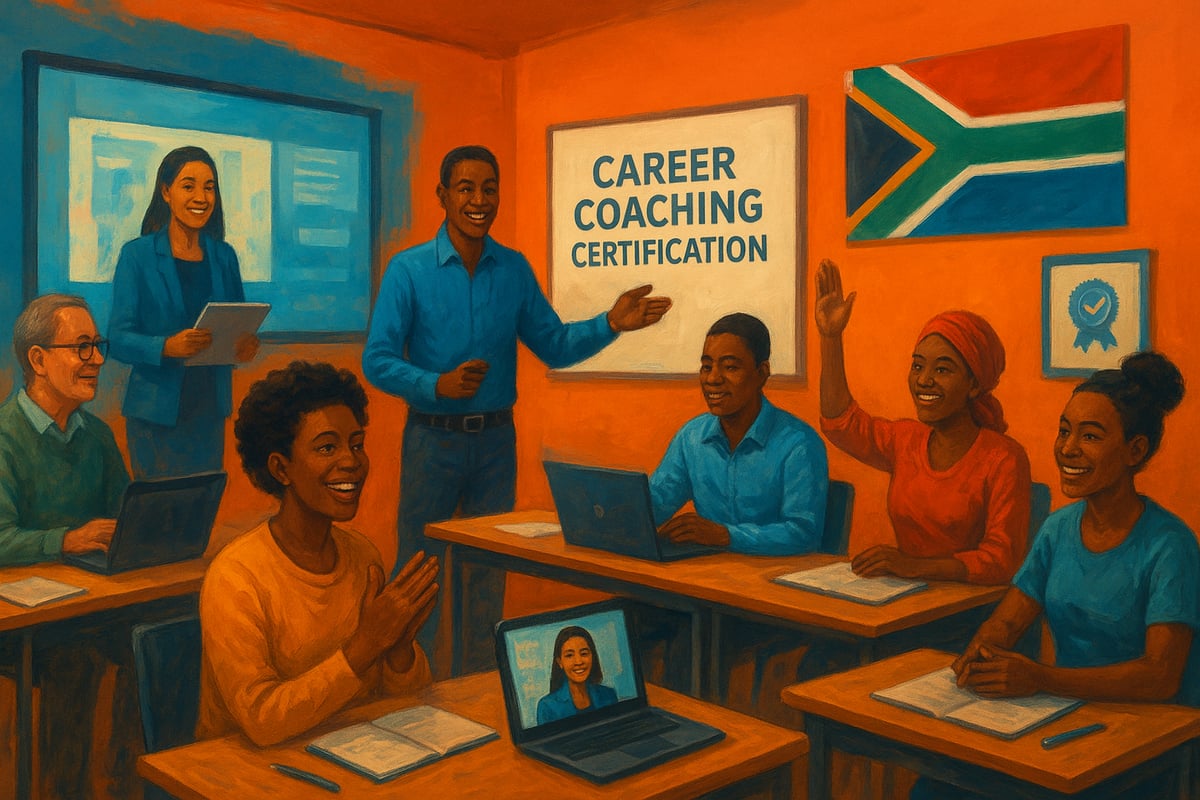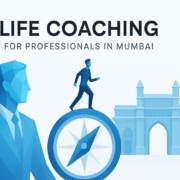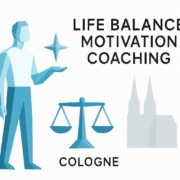Mindset and Confidence Life Coach in Copenhagen: Expert Guide 2026
Are you ready to unlock new possibilities and experience real change? Imagine working with a mindset and confidence life coach in copenhagen who empowers you to overcome self-doubt, elevate your confidence, and achieve goals you once thought unreachable. In this expert guide, you will discover how mindset and confidence coaching transforms lives, from understanding its core principles to choosing the right coach for your journey. Get inspired by real success stories, learn actionable steps for lasting growth, and take your first step toward personal transformation. For continued accountability and support, visit Accountability Now to access resources designed for your growth.
Understanding Mindset and Confidence Coaching
Mindset and confidence coaching is gaining momentum in Copenhagen as more individuals seek to unlock their full potential. The expertise of a mindset and confidence life coach in copenhagen extends far beyond simple motivation. It is rooted in actionable frameworks and proven psychological principles that drive lasting change.

What is Mindset and Confidence Coaching?
A mindset and confidence life coach in copenhagen specializes in helping clients recognize and shift limiting beliefs, build self-assurance, and adopt a growth-oriented mindset. This coaching is distinct from therapy, which often addresses past trauma, and from consulting, which provides direct solutions. Coaches use cognitive-behavioral techniques to empower clients to take ownership of their growth.
The process is highly collaborative, focusing on both personal and professional development. Common misconceptions include the belief that coaching is only for those struggling or that results are instant. Consider the case of a Copenhagen entrepreneur who worked with a coach to overcome imposter syndrome. Through targeted strategies and the support of resources like Overcoming imposter syndrome, this client transformed self-doubt into authentic confidence.
Science Behind Mindset Transformation
The science behind mindset transformation is grounded in neuroplasticity, the brain's ability to rewire itself in response to new experiences. Research by Stanford’s Carol Dweck shows that adopting a growth mindset leads to improved resilience and emotional intelligence. Studies reveal 78% of coaching clients report higher self-confidence after working with a mindset and confidence life coach in copenhagen.
Both athletes and executives benefit from shifting their mindset. For example, athletes reframe setbacks as learning opportunities, while executives develop greater adaptability and stress management. The evidence is clear: mindset coaching is not just motivational, but deeply transformational.
Key Benefits for Copenhagen Residents
Living in Copenhagen brings unique challenges and opportunities. A mindset and confidence life coach in copenhagen helps residents navigate the pressures of a fast-paced urban culture and find a healthier work-life balance. Coaching supports individuals in managing societal expectations common in Denmark, such as the drive for high achievement and social conformity.
Career advancement is another significant benefit, as coaching enhances communication, assertiveness, and strategic thinking. Young professionals who engage in coaching often report thriving both personally and professionally after learning to align their mindset with their ambitions.
Types of Mindset and Confidence Coaches
There are various types of mindset and confidence life coach in copenhagen roles. Life coaches focus on holistic personal growth, while executive coaches specialize in leadership and workplace performance. Many coaches further specialize in areas like stress management, self-esteem, or leadership development.
When choosing a coach, look for credentials such as ICF or EMCC certification. Copenhagen boasts a vibrant local coaching network, with top-rated professionals offering diverse expertise. Profiles of leading coaches in the city often highlight their unique approaches and successful client stories.
Common Challenges Addressed
Clients seek out a mindset and confidence life coach in copenhagen to overcome a range of challenges. These include battling self-doubt, breaking free from negative thought patterns, and developing assertive communication skills. Coaches also support clients in managing stress and anxiety, which are common in academic and professional environments.
For example, a student struggling with public speaking anxiety worked with a coach to gradually build confidence. Through tailored exercises and consistent practice, the student not only delivered a successful presentation but also gained tools for lifelong self-assurance.
The Step-by-Step Mindset Coaching Journey in Copenhagen
Embarking on a journey with a mindset and confidence life coach in copenhagen is a transformative experience. This process is structured to ensure personal growth, measurable progress, and sustainable change. Let us walk through each step so you know exactly what to expect from your coaching experience in Copenhagen.

Step 1: Initial Assessment and Goal Setting
Your journey with a mindset and confidence life coach in copenhagen always begins with a thorough intake. This session explores your aspirations, current challenges, and any limiting beliefs that might be holding you back.
During this stage, you’ll engage in self-reflection exercises designed to uncover deep-seated thought patterns. The coach guides you to articulate your vision and clarify what success looks like. Together, you set SMART goals—Specific, Measurable, Achievable, Relevant, Time-bound—creating a clear roadmap for your transformation.
For instance, a client may define the goal of confidently leading a team meeting within three months. This clarity is the foundation for every future step with your mindset and confidence life coach in copenhagen.
Step 2: Personalized Coaching Plan
Next, your mindset and confidence life coach in copenhagen tailors a unique coaching plan to your needs. No two clients are alike, so this stage is highly individualized.
Your coach selects the most effective methodologies for you, such as Cognitive Behavioral Techniques (CBT) or Neuro-Linguistic Programming (NLP). The plan outlines session frequency, whether you prefer in-person meetings in a cozy Copenhagen office or virtual sessions for flexibility. For example, a startup founder might need intensive weekly sessions with targeted exercises to overcome decision-making anxiety.
With a personalized plan, your mindset and confidence life coach in copenhagen ensures you always move forward with purpose.
Step 3: Building Mindset Awareness
Awareness forms the backbone of any real change. Here, your mindset and confidence life coach in copenhagen introduces mindfulness practices, self-observation techniques, and journaling tools.
You’ll track thoughts and emotions, uncovering triggers and habitual responses. Simple daily routines—like a mindful morning check-in—help reinforce self-awareness. According to the Coaching Institute Europe, 65% of clients report greater self-awareness after just three sessions.
These foundational skills empower you to notice and shift your mindset in real time, making progress with your mindset and confidence life coach in copenhagen more effective and lasting.
Step 4: Confidence-Building Exercises
Now you move into action. Your mindset and confidence life coach in copenhagen introduces practical exercises to build confidence and resilience. This often includes role-playing challenging scenarios, visualization of success, and positive affirmation routines.
For executives and professionals, practicing boardroom presentations or tough negotiations in a safe environment can be game-changing. If you’re seeking to reach new heights in your career, consider how Executive coaches for peak performance integrate similar strategies to accelerate growth and self-assurance.
These exercises gradually expand your comfort zone, helping you step confidently into new roles and situations with your mindset and confidence life coach in copenhagen by your side.
Step 5: Accountability and Progress Tracking
Sustained change relies on accountability. Your mindset and confidence life coach in copenhagen will schedule regular check-ins and feedback sessions to keep you on track.
Digital progress trackers or simple milestone charts are often used to visualize your achievements. Celebrating small wins boosts motivation and provides objective proof of growth. Over a six-month period, clients can see tangible increases in self-confidence, communication skills, and stress management.
This structured approach ensures your mindset and confidence life coach in copenhagen can adjust strategies as needed and keep your momentum strong.
Step 6: Long-Term Mindset Maintenance
The final step is all about sustaining your transformation. Your mindset and confidence life coach in copenhagen helps you develop self-coaching habits, so you remain resilient long after formal sessions end.
You’ll gain access to peer support groups, alumni networks, and ongoing workshops in Copenhagen, ensuring you never feel alone in your journey. Relapse prevention strategies are taught to help you navigate setbacks and continue progressing.
When you’re ready to take the next step, visit Accountability Now for powerful resources and ongoing support tailored to your growth with a mindset and confidence life coach in copenhagen.
How to Choose the Right Mindset and Confidence Life Coach in Copenhagen
Selecting the right mindset and confidence life coach in copenhagen is a pivotal step on your personal development journey. With so many options, it’s crucial to know what to look for, how to evaluate your choices, and how to avoid common pitfalls. Let’s break down the essential factors to consider.

Essential Qualifications and Experience
The first step in choosing a mindset and confidence life coach in copenhagen is verifying their credentials. Look for coaches accredited by recognized organizations like ICF (International Coach Federation) or EMCC (European Mentoring and Coaching Council). These certifications guarantee a certain standard of ethics and professionalism.
Experience matters just as much as accreditation. Ask about the coach’s background, years of practice, and areas of specialization. For example, compare a coach with five years of executive coaching to one who specializes in confidence-building for students. To streamline your search, you can use trusted life coach directory resources to verify qualifications and read independent reviews.
Evaluating Coaching Style and Compatibility
Coaching is a highly personal process. The best mindset and confidence life coach in copenhagen for you will be someone whose style resonates with your personality and learning preferences. Schedule a discovery call or a sample session to assess the coach’s approach.
Pay attention to how comfortable you feel during your first interaction. Trust and rapport are non-negotiable. Review client testimonials and case studies to see how the coach has helped others in similar situations. Look for evidence of real, lasting change in the coach’s previous clients.
Questions to Ask Before Committing
Before committing to a mindset and confidence life coach in copenhagen, prepare a list of essential questions. Ask about their coaching philosophy, specific methods used, and how they measure progress. Inquire about expected outcomes and realistic timeframes for achieving your goals.
It’s also vital to discuss confidentiality and ethical standards. Use a checklist to ensure you cover all important topics in your first meeting. This proactive approach will help you make an informed decision and set clear expectations from the start.
Cost, Packages, and Accessibility
Understanding the cost structure is key when selecting a mindset and confidence life coach in copenhagen. Typical rates in Copenhagen range from 800 to 2,000 DKK per session. Many coaches offer package deals, which can be more cost-effective than pay-as-you-go options.
Consider whether the coach offers in-person, online, or hybrid sessions. Accessibility is especially important for students and young professionals with busy schedules. Some coaches provide discounted rates or group sessions to make coaching more affordable.
Red Flags and Pitfalls to Avoid
While searching for a mindset and confidence life coach in copenhagen, stay alert for warning signs. Avoid coaches who lack proper accreditation or have limited experience. Be wary of anyone who promises instant results or uses high-pressure sales tactics.
A lack of structure, unclear progress tracking, or negative client feedback should also raise concerns. Protect your investment by choosing a coach who values transparency, accountability, and ongoing professional development. For ongoing accountability and to support your coaching journey, visit Accountability Now for resources tailored to your needs.
Transformative Benefits: Real-Life Success Stories from Copenhagen
Personal transformation is at the heart of working with a mindset and confidence life coach in copenhagen. The journey is unique for every individual, but the outcomes often share a common thread: profound, lasting change. Explore these real-life stories from Copenhagen to see what’s truly possible.

Personal Growth and Empowerment
Many people in Copenhagen seek out a mindset and confidence life coach in copenhagen to rebuild self-worth and emotional resilience. One single parent, feeling overwhelmed after a tough divorce, worked closely with a coach to challenge limiting beliefs and develop practical self-compassion strategies. Over several months, their sense of self-esteem soared as they learned to set healthy boundaries and prioritize personal goals.
- Improved self-awareness
- Stronger emotional regulation
- Renewed sense of purpose
The empowerment gained through coaching often leads to a ripple effect, positively influencing family and community life. By nurturing inner confidence, clients discover a new capacity to handle life’s challenges.
Career Advancement and Professional Success
Working with a mindset and confidence life coach in copenhagen can be a game-changer for career growth. Consider a mid-level manager who felt stagnated in a competitive corporate environment. Through targeted coaching, they identified self-doubt patterns and developed assertive communication techniques. The result was a successful promotion to an executive role, accompanied by a significant salary increase.
Data from the Copenhagen Business Survey 2025 shows 62 percent of coached professionals report measurable career advancement. Networking skills, leadership presence, and negotiation abilities all benefit from this focused guidance. With the right coach, professionals unlock opportunities that once seemed out of reach.
Improved Relationships and Social Confidence
Social confidence is a common goal for clients seeking a mindset and confidence life coach in copenhagen. For many, navigating Copenhagen’s diverse social landscape can be daunting, especially for expats or those feeling isolated. One international student joined the CPH Confidence Dynamics Meetup to complement their coaching sessions. By practicing assertiveness and open communication in a supportive group, they built genuine connections and overcame social anxiety.
- Enhanced relationship skills
- Greater ease in group settings
- Lasting friendships and support networks
Coaching empowers individuals to thrive in both personal and professional relationships, making daily interactions far more rewarding.
Overcoming Burnout and Stress
The fast-paced urban lifestyle in Copenhagen can lead to burnout, especially for professionals in high-pressure roles. A healthcare worker, struggling with chronic stress, turned to a mindset and confidence life coach in copenhagen for help. Together, they developed stress management techniques, including mindfulness, time prioritization, and relaxation exercises.
Within months, the client reported feeling more balanced and energized. They regained a healthy work-life balance and learned to recognize early signs of burnout. Coaching not only provided tools for immediate relief but also laid the foundation for long-term resilience in demanding environments.
Lasting Mindset Shifts
The most powerful outcome of working with a mindset and confidence life coach in copenhagen is often a sustained positive outlook. Clients routinely share testimonials of year-over-year transformation. One client, after a year of coaching, reported ongoing growth in self-confidence, adaptability, and motivation to pursue new challenges.
These shifts are supported by habits like journaling, peer support, and regular self-reflection. For those ready to take the next step, ongoing accountability and support are essential. Explore more resources and find ongoing guidance with Accountability Now to continue your personal development journey.
Future Trends in Mindset and Confidence Coaching in Copenhagen (2026 & Beyond)
As Copenhagen continues to evolve as a center for personal development, the future of mindset and confidence coaching is set for dynamic change. Residents and professionals increasingly seek support from a mindset and confidence life coach in copenhagen, and several trends are shaping the next wave of transformation. Here is what you can expect in 2026 and beyond.
Digital Coaching Innovations
The digital revolution is reshaping how a mindset and confidence life coach in copenhagen delivers services. AI-powered coaching platforms now provide personalized, data-driven feedback, making coaching more accessible and responsive. Virtual reality is also emerging for immersive confidence training, allowing clients to practice public speaking or leadership scenarios in safe, simulated environments.
For those curious about the latest technology, explore the Best AI for life coaching to see how digital solutions are enhancing the coaching experience. These innovations are not only increasing convenience but also helping coaches track progress with greater precision. As digital tools advance, expect more interactive, engaging, and measurable coaching sessions.
Integration with Corporate Wellness Programs
Organizations across Copenhagen recognize the value a mindset and confidence life coach in copenhagen brings to employee well-being. By 2026, mindset coaching will be a core part of corporate wellness packages, supporting staff through stress reduction, resilience building, and career progression.
Companies are investing in group workshops, one-on-one coaching, and digital learning modules. According to the Nordic HR Trends Report, 47% of local firms plan to expand coaching offerings soon. The result is a healthier, more productive workplace, where employees feel supported to reach their full potential.
Diversity, Equity, and Inclusion in Coaching
The city’s international community is growing, and so is the need for a mindset and confidence life coach in copenhagen who understands diverse backgrounds. Future coaching practices will prioritize cross-cultural competence, ensuring every client feels seen and understood. Coaches are receiving specialized training to address the needs of women, minorities, and expats.
Local programs are being developed for underrepresented leaders, and networking groups are forming to support these efforts. As inclusion becomes standard, more residents will see themselves reflected in the coaching industry, making personal growth accessible to all.
Sustainability and Eco-Conscious Coaching
Sustainability is woven into the fabric of Copenhagen’s culture, and now, it’s entering the coaching space. A mindset and confidence life coach in copenhagen will increasingly help clients adopt eco-conscious habits and values. Coaches are integrating sustainability topics into sessions, guiding clients to align personal growth with responsible living.
Workshops on green leadership, mindful consumption, and climate action are on the rise. For ongoing support and accountability in making sustainable changes, visit Accountability Now to connect with resources tailored to your journey.
Resources and Next Steps for Finding a Mindset and Confidence Coach in Copenhagen
Finding the right mindset and confidence life coach in copenhagen requires more than a simple online search. With a wealth of resources available, it is essential to know where to look and how to take the next step toward personal growth. Below, you will find trusted tools, networks, and practical tips to guide your journey.
Top Local Coaching Directories and Networks
To begin your search for a mindset and confidence life coach in copenhagen, start with reputable local directories and professional associations. These platforms ensure coaches meet high standards and hold recognized certifications.
- ICF Denmark: Use their online coach finder to verify credentials and specialties.
- EMCC Denmark: Explore their member directory for experienced coaches.
- Copenhagen Coaching Network: Connect with local professionals and attend introductory events.
Before choosing, always check the coach’s qualifications and read client testimonials to ensure you find a coach aligned with your goals.
Self-Assessment Tools and Free Resources
Assessing your current mindset is a smart first step. Many mindset and confidence life coach in copenhagen professionals recommend online self-assessment tools and free webinars to help you reflect on your strengths and growth areas.
- Take a mindset evaluation quiz to pinpoint limiting beliefs.
- Join free workshops hosted by Danish coaching organizations.
- Try a mindset scorecard for self-reflection.
Research shows that self-compassion mindsets and academic performance are closely linked, highlighting the value of these tools in building confidence and reducing anxiety.
Community Support and Peer Groups
Building confidence is easier when you have a supportive community. Copenhagen offers various mastermind groups and peer circles where you can connect with like-minded individuals pursuing similar goals.
- Join a local confidence-building circle to practice new skills.
- Attend meetups for networking and shared learning.
- Become part of a peer accountability group to stay on track.
Many who work with a mindset and confidence life coach in copenhagen find these groups invaluable for ongoing motivation and encouragement.
Taking Action: Booking Your First Session
Ready to take the next step? Preparing for your initial session with a mindset and confidence life coach in copenhagen ensures you make the most of your investment.
- Clarify your goals and expectations.
- Prepare questions about coaching style, methods, and outcomes.
- Bring an open mind and a willingness to grow.
For ongoing accountability and support, visit Accountability Now for resources tailored to your journey. With the right mindset and support system, your transformation in Copenhagen can begin today.
